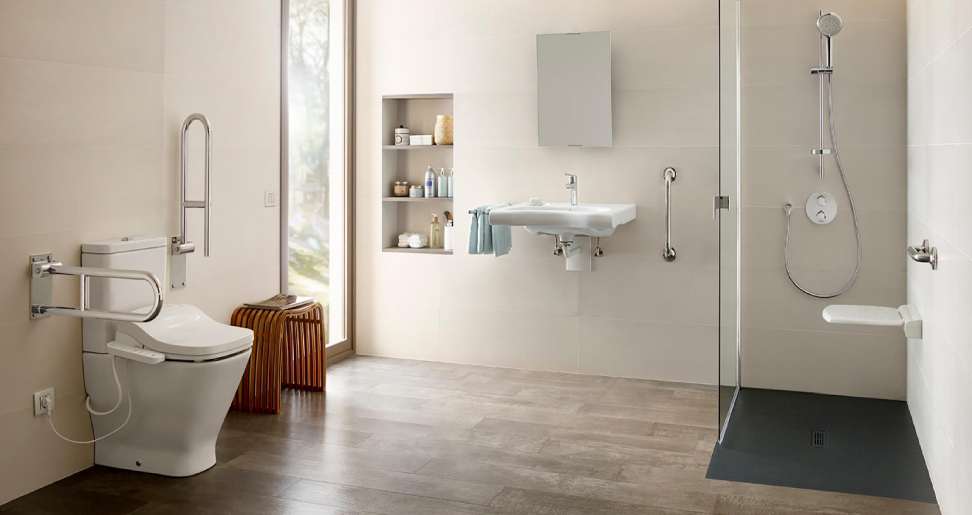Designing a bathroom that is safe and comfortable for elderly individuals is an important task. As people age, their needs change, and it becomes essential to adapt the home environment to ensure their safety and well-being. The bathroom, in particular, can be a hazardous place if not designed with care.
In this article, we will explore practical ways to create an elderly-friendly bathroom, focusing on safety, comfort, and ease of use.
1. Prioritize Safety with Non-Slip Flooring
The first step in designing an elderly-friendly bathroom is to prioritize safety. Slippery floors are one of the most common causes of accidents in the bathroom. To prevent falls, it is essential to install non-slip flooring.
Options such as textured tiles or rubber mats can provide the necessary grip to reduce the risk of slipping. These materials are available in a variety of designs, so you can choose something that matches the overall aesthetic of the bathroom.
2. Install a Walk-In Shower for the Elderly
Bathtubs can be difficult and dangerous for elderly individuals to navigate. A Walk-In Shower for Elderly users is a much safer and more practical option. Walk-in showers have low thresholds, making it easier to step in and out without the risk of tripping.
Additionally, installing grab bars inside the shower provides extra support and stability. Consider adding a shower chair for those who may have difficulty standing for extended periods.
3. Choose Comfortable Fixtures
Comfort is key when designing a bathroom for elderly individuals. One way to enhance comfort is by choosing the right fixtures. For example, installing a comfort-height toilet, which is slightly higher than standard toilets, can make it easier for elderly users to sit down and stand up.
Similarly, consider lever-style faucets instead of traditional knobs, as they are easier to operate for those with arthritis or limited hand strength.
4. Add Ample Lighting
Proper lighting is crucial in any bathroom, but it is especially important for the elderly. As we age, our vision tends to decline, making it harder to see in dim lighting. Ensure that the bathroom is well-lit with bright, evenly distributed lighting.
Consider installing motion-sensor lights that automatically turn on when someone enters the bathroom, reducing the need to fumble for switches in the dark.
5. Incorporate Practical Storage Solutions
An elderly-friendly bathroom should also include practical storage solutions that are easily accessible. Look for stone countertops for sale for a great addition, as they offer both durability and style.
However, it’s important to ensure that any storage areas, such as cabinets or shelves, are within easy reach and do not require bending or stretching. This can help prevent accidents and make daily tasks more convenient.
Conclusion
Designing an elderly-friendly bathroom is about more than just safety; it’s about creating a space that promotes independence, comfort, and dignity. By focusing on key aspects such as non-slip flooring, walk-in showers, comfortable fixtures, ample lighting, practical storage, and easy navigation, you can create a bathroom that meets the needs of elderly individuals while also enhancing their quality of life.
Remember, thoughtful design can make a significant difference in the daily lives of our elderly loved ones.
Also Read
- Is Steel Or Iron Ore A Good Career Path?
- Is Telecommunications Equipment A Good Career Path?
- How Many Jobs Are Available In Electric Utilities Central?

